How To Choose A Carbon Plate Running Shoe
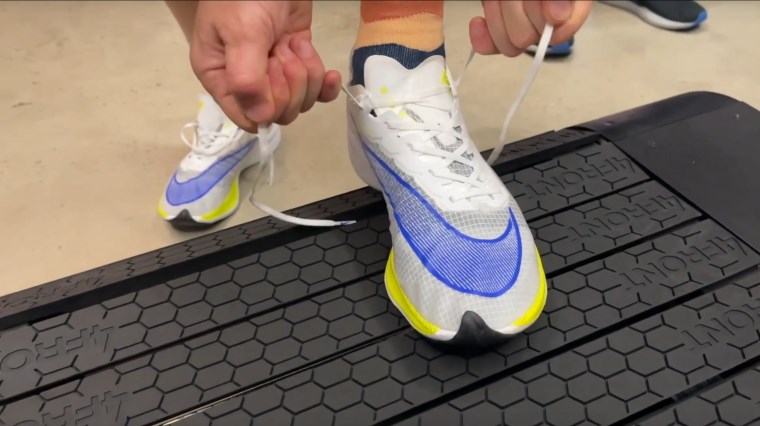
Carbon-plated running shoes have taken off in the racing world with many leading running brands having a crack at engineering an ultra-lightweight, propulsive and effortless ride for race day.
Josh uncovers the why of carbon-plated shoes in terms of their performance benefits and how the hype is justified, translating to faster finishing times for real-world athletes.
He explains how the combination of super foam and a carbon plate delivers a winning formula for elite racers chasing the winner’s podium and a new generation of speed.
With examples of specific 'super shoe' models from top brands Nike, Adidas, Brooks, On Running, Hoka One One, Saucony and Asics, Josh demonstrates how carbon-plated shoes can vary from brand to brand and how they can provide a different feel underfoot to conquer your race day mileage.
Check out the video with full transcript below.
Hey guys, Josh here from Sportitude Running and today isn't your traditional shoe review. We're going to dive into the carbon plate phenomenon. In front of me I have a long list of shoes with carbon plates in them.
We're going to be discussing why they even exist in the first place. They've obviously replaced racing flats but what do they do from a performance benefit perspective? We’ll discuss the super foams which are encapsulating those carbon plates and what they do as well.
To wrap it up we're going to talk you through the process we go through when fitting a carbon-plated shoe because believe it or not, we don't sell a carbon plate shoe to anyone who asks. You need to qualify to have one on your foot.
We'll take you through all those questions in today's blog. Without further ado let's get stuck in.
Carbon plate origins: Nike's Breaking2 project
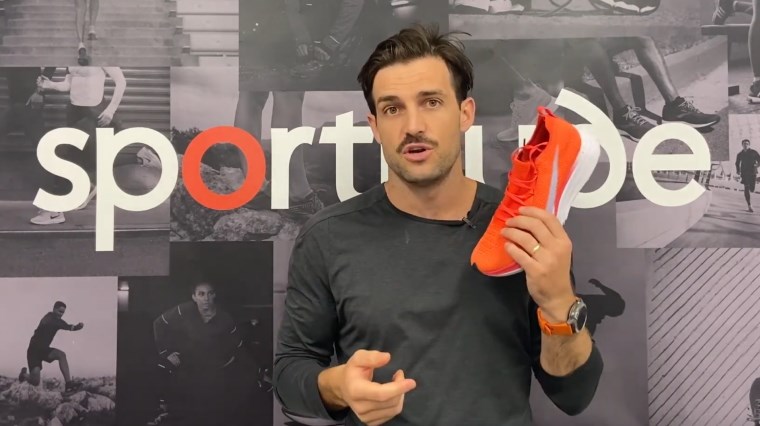
Before we get stuck into the carbon plates, all the super foams and the why let's talk about the history of carbon plate shoes. Adidas had a crack at it in the early 2000s and it didn't work so they moved on. Fast-forward around 15 years and in May 2017 Nike had that first crack at breaking the two-hour marathon barrier with Eliud Kipchoge in the Nike ZoomX Vaporfly 4% and the Breaking2 project.
I’m holding my pair which I got a couple of years ago and this was the second version of that shoe with the Flyknit upper. Nike really didn't just pour a couple of ingredients into a beacon then pop out a shoe and think ‘let's go ahead with it’.
They had a few years executing the ZoomX midsole, so they really dialled in on the super foam that was going to complement the carbon plate. When they came to market with that race and obviously using the fastest guy to ever cover the marathon distance, the whole world went in a spin. Everyone wanted to run faster, everyone wanted to have a carbon plate shoe on their foot.
Nike had the monopoly there. They owned that market, and they had a good 3 year plus head start on everyone else.
Carbon plates today: Racing flats vs carbon plate shoes
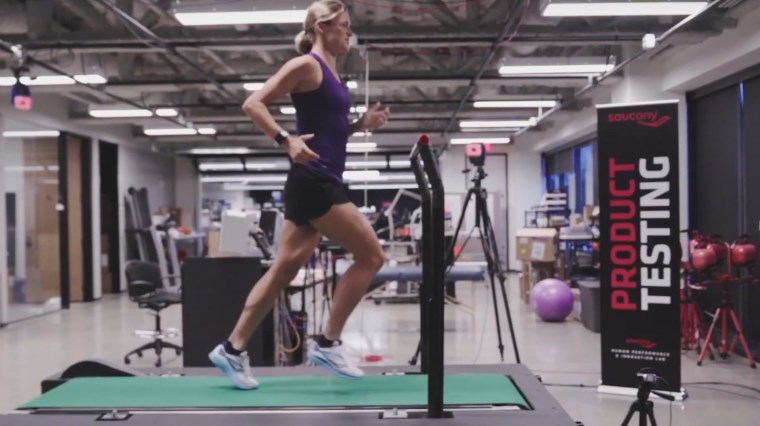
This leads us to today. In 2021 we have a whole heap of options in that carbon plate category. For you the runners we need to dial in to find out what they all do and why they even exist.
Let's talk about a carbon plate shoe in comparison to a racing flat. Racing flats were essentially minimalist training shoes, taking midsole and outsole components out and making a shoe light on top to reduce the weight. That's how they achieved a nice, light and responsive feel underneath your foot.
That certainly works and it still works today but the carbon plates and the super foams take the load off the body and reduce the risk of onset fatigue and with that you get a performance benefit.
Does that mean it's going to work for every single runner out there? No, it doesn't but there are some serious benefits behind purchasing a carbon plate shoe for a minimal amount of training but obviously for race day.
When we talk about all brands and I'm not just pigeon-holing Nike, every single brand that have released a carbon plate shoe in the last couple of years have done their due diligence and their testing has been done on their elite athletes. They are trying to make their race day shoes faster and they're going to be trying to get them onto their sponsored athletes.
When you start thinking about that as a percentage in the global running community, we're talking about the minority of the minority. They’re people who are probably running at a state level, national level and obviously an international level anywhere from 5km road runs right up to your marathon distance. We're talking about the elite of the elite.
Super foams: Compression and response
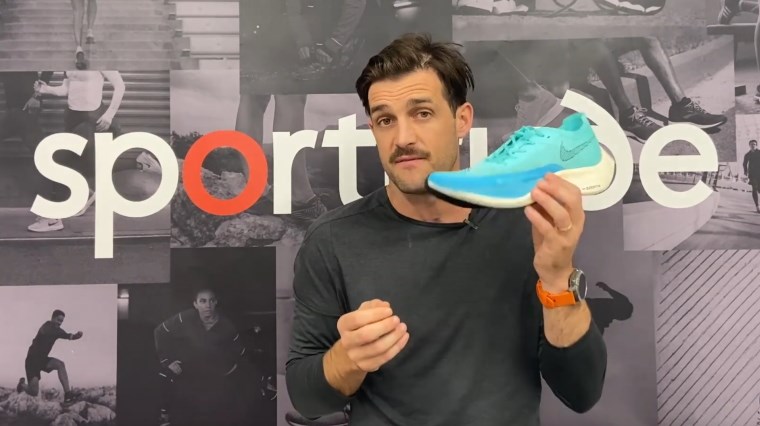
We've talked about carbon plates, now to dial in. There's a couple of different varieties with carbon plates in thickness and how they're positioned within the midsole regarding the propulsion benefit you're going to get. However, the big topic of discussion is the super foams because not a lot of you would know but the actual foam itself does the lion's share of the work underneath the foot.
The carbon plate is certainly there to assist the performance of that super foam but the foam itself is going to give you the compression and the response, and the carbon plate aids in that movement pattern.
I’m holding the Nike ZoomX Vaporfly Next% 2 in my hand, ZoomX being Nike's super foam. To talk about another brand we're going to hold up the Brooks Hyperion Elite 2 DNA Flash with the nitrogen-infused midsole, PWRRUN PB in the Saucony Endorphin Pro and we have FlyteFoam Turbo which was just released in the Asics MetaSpeed Sky. The New Balance FuelCell RC Elite with the FuelCell midsole is not too dissimilar to what Nike have released with the ZoomX foam.
There's a couple of different varieties with regards to foams underneath the foot as there are with the carbon plate thickness and positioning.
Carbon-plated shoes with a racing flat feel
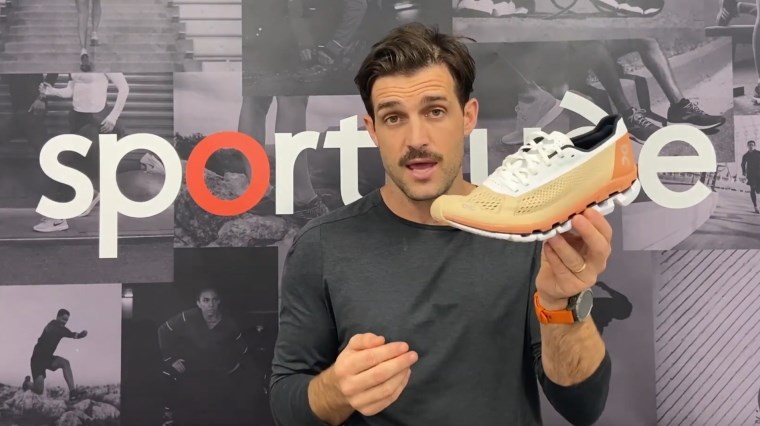
Let's talk about the carbon plate shoes I’ve got in front of me. Firstly I'm going to talk to you about shoes that may have a more traditional racing flat feel to them. When we're talking about that obviously you're not going to be talking about a high stack with a really soft foam. You're going to be talking about lightweight shoes with a really good connection with the ground.
A couple of shoes that come to mind are the On Running Cloudboom, the Adidas Adizero Pro and I'd also throw in the Brooks Hyperion Elite version 1 into that same category.
All three shoes I’ve just mentioned are certainly light with the carbon plate injected through the midsole but they're firmer underneath the foot. The stack is a little bit less so you're slightly closer to the ground, so you're going to have that more of a traditional racing flat feel underneath the body.
Carbon-plated training shoes

The next category we'll talk about is running shoes I would push towards training. The two shoes I'm going to grab could also be used for racing. I'm not going to rule that out at all but the whole engineering componentry has been designed for training.
I'm holding the Hoka One One Carbon X 2 in my hand. It has a full-length carbon plate on their PROFLY midsole, however this shoe has a really aggressive rocker. It plays on what Hoka One One are known for.
Underneath the foot it's slightly firmer. It's certainly not as firm as the other category with regards to the lower profile racing flats, but it's not quite as soft as your super foams. However, this shoe certainly has a place in the market.
It’s marginally heavier in comparison to the others that we're going to talk through today but has more of a traditional training shoe feel. It has a higher stack with little bit more shoe under your body, but that carbon plate provides a smooth transition through the whole gait cycle.
The other one we're going to talk about is the Asics Magic Speed. This shoe has only just launched and it's unique regarding its carbon plate engineering. It's a three-quarter carbon plate that’s really dialling in on that forefoot propulsion.
This shoe has a FlyteFoam midsole underneath the foot. It has a relatively generous stack height however the componentry is probably more to complement mileage training.
It's a shoe that you could potentially use for some sessions and quicker tempo runs, but giving you that carbon plate for a responsive, propulsive feel through the forefoot. It's again not the lightest out of the category.
Another one to throw into this conversation is the Saucony Endorphin Speed. It happens to have a plastic plate but has the same concept. It can be used for a little bit of tempo training and maybe some mileage running but it's engineering and philosophies are all about complementing your training.
Carbon-plated shoes with softer cushioning
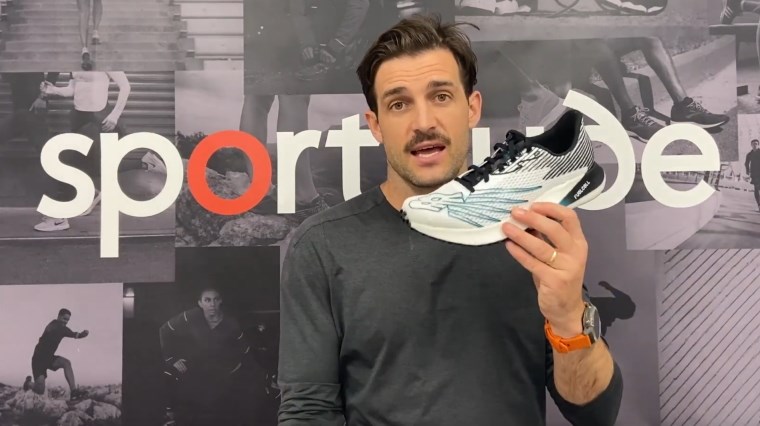
The next category of carbon plate shoes I'm going to talk about are probably the softer, more popular carbon plate shoes. I'll hold up in no particular order the Nike ZoomX Vaporfly Next% 2, Asics MetaSpeed Sky and the New Balance FuelCell RC Elite.
These three shoes all have full-length carbon plates but the foam underneath the foot is slightly softer, so you get that really squishy and responsive feel underneath the body.
Carbon-plated shoes with firmer cushioning
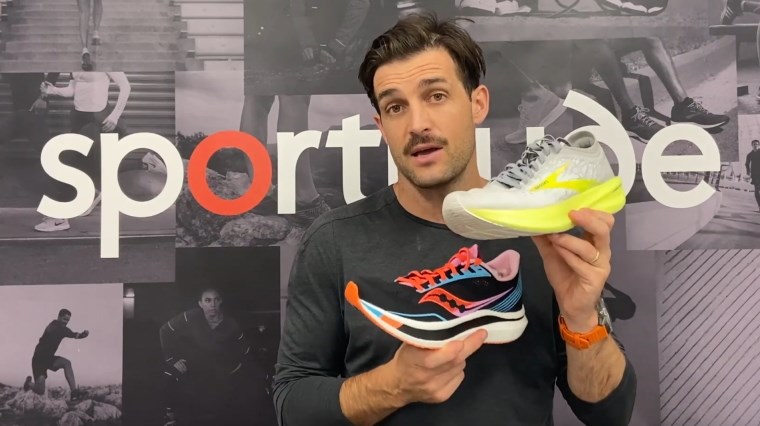
The next two super shoes I'm going to talk about have a slightly firmer fit underneath the foot, so not quite as soft as the other three. We're talking the Brooks Hyperion Elite 2 and the Saucony Endorphin Pro.
You might be raising some eyebrows at home and saying, “I have this and I find it quite soft”. That is true, they're certainly not the firmest shoes on the market or in this category but they're not quite as soft and they don't compress as much as the other three being the Nike ZoomX Vaporfly Next% 2, New Balance FuelCell RC Elite and the Asics MetaSpeed Sky.
Is a carbon plate running shoe right for you?
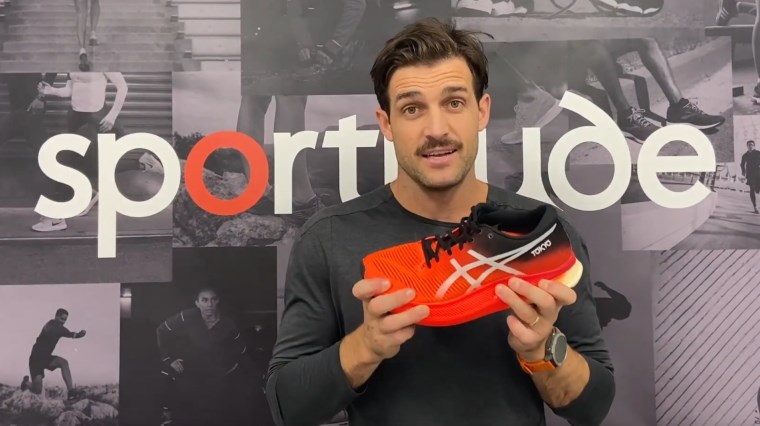
The next topic of discussion is if you're coming in and you're looking to buy a carbon plate shoe we're going to ask you straight up “why?”. Why do you want to buy a carbon plate shoe?
That may sound like a very stupid question but it's very important. We need to understand what you're intending to do with the shoe. If you're just going to buy one for mileage training and get out there and do all your runs in them, we will convince you otherwise.
However, if you're looking for a little bit more from your training regime, be it something to compliment your mileage running with some tempo runs or some interval running and obviously for race day, carbon-plated shoes are worth a look.
The shoes we've talked about bar the couple that could be used for some training, I really assume that you may only go through one every two years and that's in all honesty. Unless you're running four or five marathons a year, you're probably only going to go through a super shoe once every 18 months give or take.
The reason we ask that is we need to know if you’re doing 5km on the road, 10km runs, half marathons, marathons or triathlons. We need to understand who you are as a runner and what you're trying to achieve with your racing.
Giving that fate as well we're also going to ask you some questions about your shoe history because if you're coming from generally high stack shoes, you're probably going to want similar characteristics with your race shoe that's going to complement that. If you're coming from more of a lower drop, low profile daily trainer you're probably going to find something like a Nike ZoomX Vaporfly Next% too high of a stack and too soft underneath your body.
We're trying to introduce change into your shoe selection but not completely reverse the system. You need to have some familiar characteristics with your race day shoes. The other thing to consider is the carbon plate. The carbon plate makes the shoes a lot stiffer underneath the foot so if you haven't had anything like this before and you've maybe been racing for a number of years, a carbon plate might be too much change for you at this point in time.
We may introduce a shoe like the Saucony Endorphin Speed for example which has a plastic plate. It still has that snappy responsive feel underneath the body, but that shoe might be an easier progression for you to make your way to a lighter carbon plate shoe.
There’s a few things that we like to check off to make sure that you fit that category. The other really important factor is knowing that the carbon plate shoes or the racing shoes are not going to do it for you. You still need to do the training, you still must recover well and you still need to concentrate on your nutrition.
With that in mind we do want that placebo effect, we want that quick fix – to get a fast shoe and all of a sudden be running and smashing PBs. The carbon plate shoes are almost like the cherry on top of a very well planned, well thought-out training nutrition and recovery program. They certainly work but there's a lot more that goes into making those PBs achievable for you the runner.
Another thing to keep in mind is we are talking about lighter weight shoes. If you're thinking about buying a carbon plate or a racing shoe to give you an element of support, you can almost scrunch that piece of paper up and throw it in the bin because we're taking aspects out of these shoes to make them lighter.
Yes, there's some structure and integrity within the midsole with that carbon plate and it does feel slightly stable underneath your foot. However, a lot has come out of this shoe from a traditional running shoe to make them lighter, snappier and responsive.
What we have found and what we will continue to find with racing shoes is there is more range of movement. There's a higher velocity of movement through that transition and that is simply there to reduce your ground contact time to increase your responsiveness and get you running faster for longer.
The wrap up
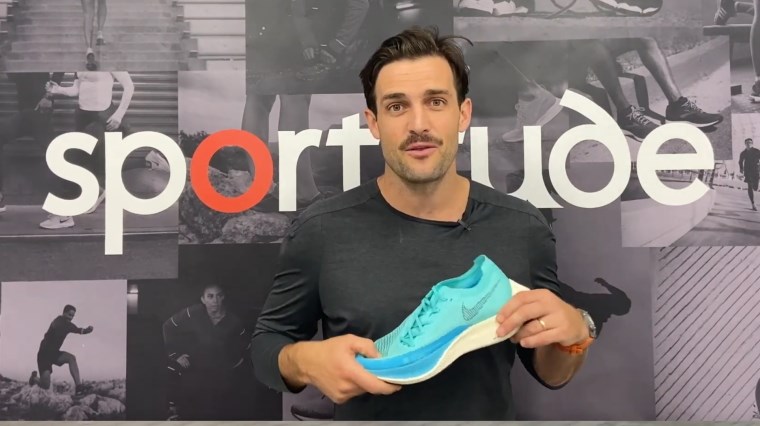
In summary basically we owe Nike a little bit of thanks. If it wasn't for them back in 2017 and the first attempt at Breaking2 and obviously Eliud Kipchoge this whole carbon plate boom may not be a thing. They invested a considerable amount of money in that project and it worked.
Brands jumped onto that bandwagon and have produced all their own versions of the super shoes and we stand here today in 2021 with a lot of options.
The purpose of your carbon plate shoes is obviously to make them lighter and faster, take load off your feet and body and to reduce the onset of fatigue. Just remember, they are lighter. Being race day shoes we're taking components out.
Don't think you're going to get a sustainable amount of stability out of these shoes because you're not. They are designed to go fast and to be incredibly responsive. If you're looking for some extra support maybe have a conversation with yourself and have a conversation with a salesperson about lighter shoes that might offer a little bit more support.
Please be careful with subjective reviews out there. I say that because a lot of people use YouTube as a platform to voice their opinion on running shoes and that is absolutely fine. Take everything with a grain of salt and make sure that you only listen to stuff that is relevant to you the runner individually.
Thank you for tuning in to today's carbon plate discussion and I hope it's been a benefit. If you have any questions, queries, comments or theories please contact our Sportitude shoe experts.
Please subscribe to the Sportitude YouTube channel if you haven’t already done so and until next time stay safe, happy running and be kind to each other.
We'll see you out on the road, take care.
